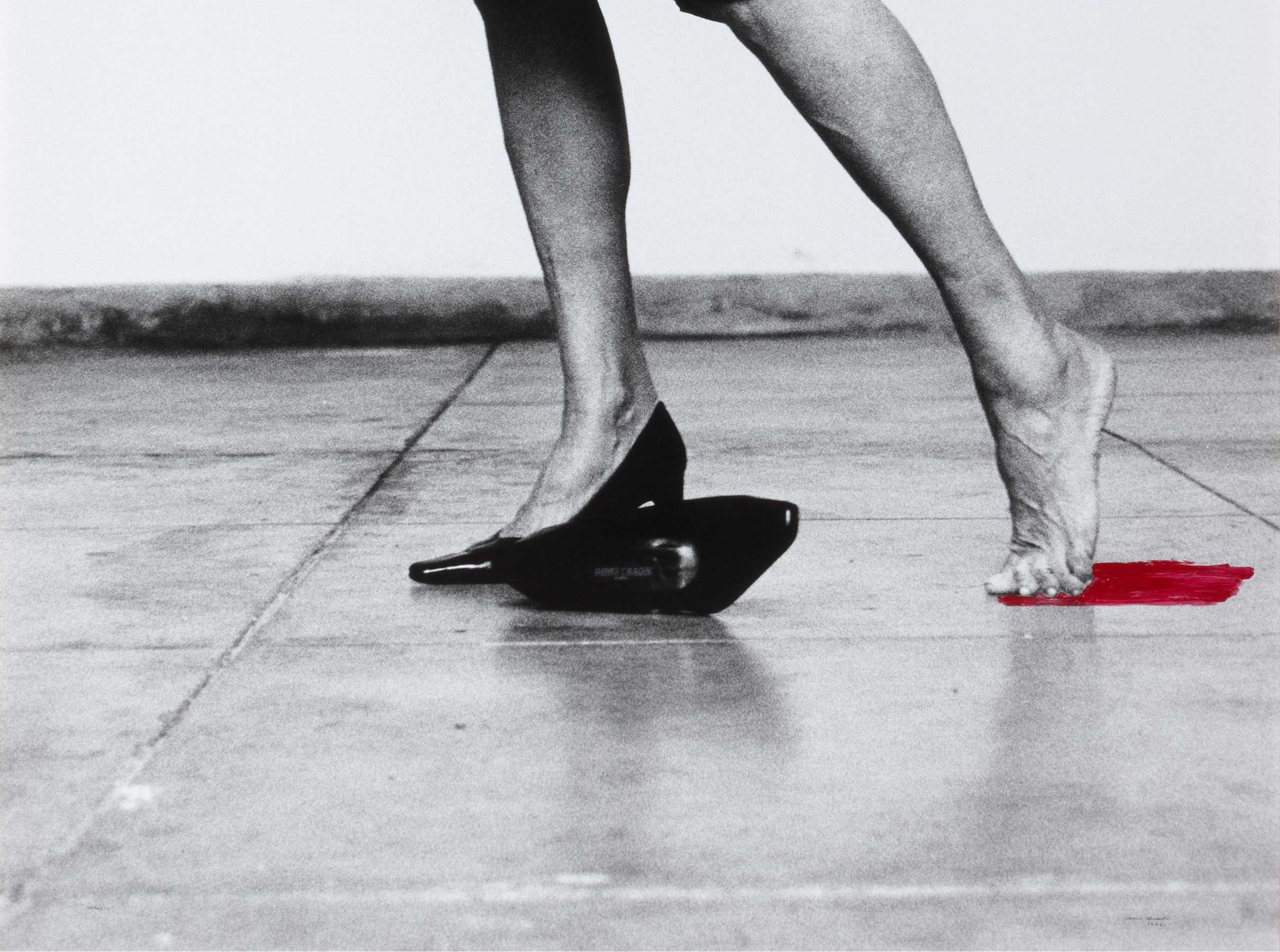¿Ojo? ¡Ojo! [¿Ojo? ¡Ojo!]
- 1981
- Acrylic on canvas (Diptych)
- 89,8 x 69,7 cm
- Cat. P_591
- Acquired in 1996
¿OJO? ¡OJO! (1981), which can be roughly translated as Eye? Watch Out!, is a diptych in which Carlos Alcolea duplicates a schematic face and combines image and text in the same place. Alcolea uses a minimum of simple strokes to create an image that tallies with the word ‘¿Ojo?’ (Eye?) on the first canvas, with its red, crimson and earth tones. He applies an identical system for the second canvas, but there he uses a black background and modifies the word to turn it into ‘¡Ojo!’ (Watch out!). He “camouflages” the exclamation marks as a pair of stylish earrings on either side of the face in the portrait as his way of converting the question into an enthusiastic exclamation.
In his exhaustive study ‘Alcolea’s Aesthetic Thinking’, critic and curator Óscar Alonso Molina analyses the ‘linguistic undertaking’ of this painting and the relationships between text and image in the artist’s oeuvre. He writes that ‘Alcolea states that “the difference between speaking and writing poses the same problem as between looking and painting” and applies this to his ¿Ojo?¡Ojo! series, where he equivocally paraphrases the basic lines of the nose, eyes and ears’. Alonso Molina also considers the play of ‘literality’ that Alcolea deploys in his paintings and his ‘identification of the painting’s surface with other planes’, as aspects which, he argues, are again present in ¿Ojo?¡Ojo!. Alluding to Paul Valéry’s legendary phase that ‘the deepest of all is the skin’, Alcolea would state that ‘what is painted is the skin and it has no depth’.
Thanks to his astonishing use of language and wordplay, Carlos Alcolea occupies a place in the genealogy of art whose closest reference is the impenetrability and irony of Marcel Duchamp. At the same time, his profuse, unexpected iconography points to a complex, erudite imagery at the service of an intellectual output that has been connected to British pop art and figures such as David Hockney and Alex Katz.
Other works by Carlos Alcolea

![¿Ojo? ¡Ojo! [¿Ojo? ¡Ojo!]](/f/webca/INF/assets/img/fff.png)